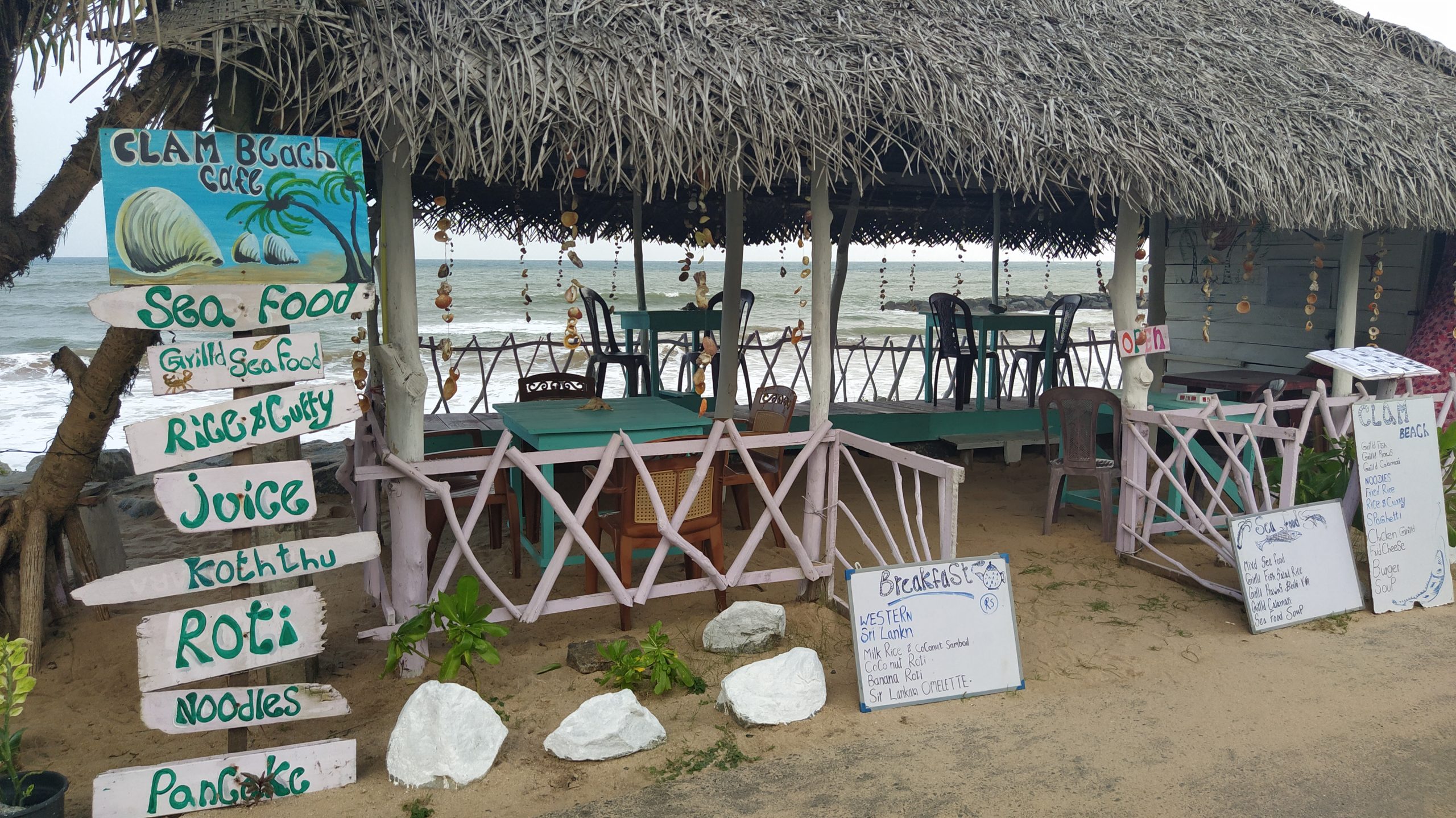Stand out in the Horeca industry

Are you running a hotel or restaurant? Here are 9 things that will set your offer apart:
Imagine strolling along a beautiful beach. Beneath your feet, you feel the pleasantly warmed sand, and the sea breeze occasionally rustles your linen Hawaiian shirt. The air is filled with the scent of carefree summer, freedom, and leisure. You walk at a leisurely pace, passing coastal hotels, restaurants, and pubs at every step, all doing their best to attract new customers—vacationers like you, searching for attractive accommodations and a cozy place to eat.
However, something catches your attention—each place’s offer seems very similar, almost identical. You start to wonder whether it’s an oversight or a deliberate choice by the owners.
The photo below is intended to illustrate what I’m talking about

How do the owners intend to attract new customers? Have they thought about how to stand out from the crowd without just competing on price? These are the questions that owners of seaside hotels, forest guesthouses, or restaurants in picturesque locations increasingly ask themselves. There are plenty of such establishments in Poland, and each of them wants its offer to be the best. Not necessarily in terms of price but rather in terms of the “quality” of experiences. What can you do to stand out from the ordinary?
In this article, we will discuss 9 things that effectively distinguish hotels and restaurants with seemingly identical offers. Implementing each of these simple tips can help attract new customers initially and then encourage them to return regularly. It’s not as challenging as it may seem—read on to find out everything.
1. Ensure your horeca offer is available on external, reputable online platforms
If you want to reach the widest audience possible, make sure to have a presence on industry-specific listing websites and on Google search. This will give your services the right visibility and attract customers who may not even be aware of your existence. Keep in mind that competitors are likely active in these places, gaining an edge over establishments that are not present there.
Examples of platforms include Airbnb, Booking, and TripAdvisor. Airbnb and Booking are industry giants, processing over 1.5 million bookings on Booking daily. TripAdvisor is a well-known platform aggregating reviews of tourism-related businesses.
Google is a critical tool, with nearly 100 billion users globally each month. Having a presence on Google, especially with a business profile on Google Maps, is essential for attracting local search traffic.
2. How to distinguish your offer from the competition? Focus on your website and create attractive descriptions
Your website must contain comprehensive and understandable information about your accommodation offer. Focus on making the descriptions informative but not overwhelming with details. After reading them, potential customers should know what to expect on-site. To stand out, consider what makes your hotel or restaurant unique, and why people should visit you. Include these points in your description, emphasizing the essential benefits.
Does your guesthouse offer access to a comfortable hot tub or sauna? Does your restaurant serve dishes based on fresh regional ingredients? Write about it! Also, tailor your language to the target audience—address business clients differently from families with children.
While content and appealing descriptions are crucial, the visual aspect is equally important. Ensure high-quality photos of rooms, amenities, or (for restaurants) dishes that customers can enjoy. People say they eat with their eyes, and it’s hard to disagree with that statement.
3. Harness the potential of social media channels
Don’t overlook social media—create business profiles on Facebook, Instagram, YouTube, or LinkedIn (for B2B customers). If you feel your offer could be interesting on TikTok, the platform for short videos, don’t hesitate to use it. A single post can become viral, promoting your offer on an unprecedented scale.
Hundreds of millions of people use these platforms daily. Allow them to find you where they like to spend their time. However, remember two fundamental rules:
- Don’t focus solely on promotional content; mix informative and entertaining posts with those advertising your offer, maintaining a proper balance.
- Social media account management should not be an end in itself; ensure that customers can easily navigate from your social media profiles to your website, with the ultimate goal being conversion, such as making a reservation.
4. Always try to redirect the customer to your website
We mentioned this briefly earlier, but this aspect is not limited to social media. Strive to attract customers to your website and collect information from them there. What does this mean?
Prepare a clear, user-friendly contact and reservation form. Reach out to users who visited your website and checked your offer but did not make use of it—use remarketing for this purpose. Attract new customers through Google Ads campaigns, where landing pages work well. When a user lands on such a page, they have only one action to take (e.g., signing up for a newsletter), preventing distraction and ensuring they don’t close the page.
With such a mailing list, you can send potential customers information about special offers, discounts, holiday reservations, or special events. Always include a link in these emails directing users to specific subpages. Remember, your primary goal is to bring users to your website.
5. Content on your website is key
Develop a thoughtful content marketing strategy that works for you in the long term. Customers don’t want to read hundreds of identical, generic offers—they seek something that will convince them to choose a particular place. Create content that genuinely interests your target audience.
A company blog is an excellent tool for this purpose. You can post articles not only about your hotel or restaurant but also about the philosophy behind your brand. Let customers get to know you, inform them about additional attractions or interesting events in the area. Share your story and the values that matter most to you. Also, use video formats that you can publish on your YouTube channel.
6. Establish partnerships with tourist facilities in other parts of the country
Strength lies in numbers. Try to build partnerships with similar establishments in other parts of the country. Recommend each other’s services, support each other by promoting your offers. An ideal solution is a blog where you can publish a post about a weekend travel plan to a selected region. It can include information about recommended attractions, the best restaurants, or the most popular accommodations. Ask the establishments you collaborate with for similar recommendations on their blog or social media profiles.
7. Regularly check reviews and comments online
Are you familiar with the concept of social proof? According to it, people are more likely to make specific choices if they know others have done the same. For restaurants or hotels, customer reviews are crucial. Regularly check and respond to comments, including negative ones.
There’s nothing worse than sweeping uncomfortable reviews under the rug. If they are baseless, clarify that the situation did not occur and is simply untrue. If an unpleasant incident did happen and a customer chose to write about it, apologize politely, mention that there was an error/mistake that has been rectified and will not happen again. This will strengthen trust in your establishment and brand, and potential customers will receive confirmation that you create an offer for them and respond appropriately to situations.
8. Pay attention to seemingly insignificant details
While the offer is undoubtedly the most critical factor in your business, don’t forget about smaller aspects. For example, if you run a small forest guesthouse and love nature, silence and peace and you have a soft spot for the four-legged friends you adopted when they were abandoned in the forest, casually mention it. You might attract customers who share your love for dogs. Maybe there are unwritten rules in your area—entry to the nearby open-air museum is free, but leaving a donation for those who maintain it is a kind gesture. Write about that too.
These are small details that may not seem to contribute much at first glance but can ultimately convince customers to visit a specific place, try local cuisine, or rent a room from a hospitable host.
9. Take care of technicalities
Here, we would mention a few basic things:
- A modern, responsive website built on a secure, regularly updated, and supported CMS like WordPress.
- Supporting tools, such as Linktree, allowing you to create a simple business card-like page presenting links to social media and all other places online where customers can find you.
- Marketing automation tools that allow you to, for example, automatically send personalized emails to your customers with reservation reminders or requests for reviews.
10. Watch an example of using YouTube as a hotel promotion channel:
Would you rather watch a movie? Visit our YouTube channel:
Do you want to stand out from the competition in the horeca industry?
Leave it to the professionals, that is us!



